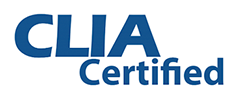
El Síndrome de Hiperestimulación Ovárica (SHO) es una condición dolorosa y potencialmente peligrosa en la cual los ovarios se inflaman severamente. El SHO ocurre como una respuesta exagerada a una afluencia de hormonas, típicamente las inyecciones hormonales administradas como parte del ciclo de FIV. Aunque es raro, el SHO puede ocurrir como resultado de inducir a los ovarios a madurar varios óvulos a la vez como preparación para la extracción de óvulos.
Una complicación mayor del SHO ocurre cuando los ovarios comienzan a filtrar líquido. Cuando los ovarios se hinchan, los vasos sanguíneos se vuelven porosos, ayudando a liberar líquido. Este líquido se filtra en su región pélvica, abdomen, y puede incluso entrar en su cavidad torácica en ocasiones muy raras. Esto puede llevar a complicaciones muy peligrosas.
¿Qué Causa el SHO?
Mientras que las causas exactas del SHO no se conocen completamente, los médicos reconocen la relación entre la hCG (gonadotropina coriónica humana), una hormona del embarazo, y esta condición. El SHO a veces ocurre naturalmente cuando hay un nivel alto de hCG. Esto sucede cuando una mujer lleva múltiples fetos, tiene un embarazo molar (un grupo anormal de células en lugar de un embrión y placenta), o tiene una condición tiroidea específica.
Cuando se somete a FIV, el SHO también es un riesgo. Como parte del protocolo de FIV, su médico prescribe hormonas inyectables que fomentan que muchos óvulos se desarrollen al mismo tiempo, así como una “inyección desencadenante” de hCG. Dentro de una semana de la inyección desencadenante, puede notar los síntomas del SHO. Cuando ocurre el embarazo, su cuerpo produce su propia hCG, y sus síntomas pueden empeorar aún más.
Es importante notar que las hormonas inyectables son el culpable más probable cuando ocurre el SHO. Los medicamentos orales raramente contribuyen a la condición. Pero, como se mencionó anteriormente, el SHO también puede ocurrir naturalmente.
¿Quién es Más Propenso al SHO?
No todas las personas que se someten a FIV, o cualquier otro tratamiento de fertilidad, están en riesgo de SHO. A veces sucede en aquellas sin factores de riesgo en absoluto, pero algunas condiciones pueden predisponer a una mujer al SHO. Estos factores de riesgo incluyen:
- Episodios previos de SHO
- Tener bajo peso o peso corporal bajo
- Niveles más altos de lo normal de estrógeno, o picos de estrógeno, justo antes de una inyección desencadenante de hCG
- Mujeres menores de 35 años
- SOP (Síndrome de Ovario Poliquístico)
- Un gran número de folículos dentro de los ovarios
Si tiene cualquiera de estos factores de riesgo, su médico ciertamente está consciente, ya que lo monitorizan muy de cerca mientras se somete a tratamientos como FIV.
Síntomas del SHO
Como se mencionó, los síntomas del SHO típicamente comienzan dentro de una semana de su inyección desencadenante de hCG, aunque los síntomas pueden aparecer unos días después en algunos casos. Los síntomas leves a moderados pueden empeorar con el tiempo o mejorar con el paso de los días. Aquí hay algunas cosas que debe observar.
El SHO leve a moderado puede presentarse con estos síntomas:
- Dolor o sensibilidad en la región pélvica
- Hinchazón, inflamación, o un cambio notable en cómo le queda la ropa alrededor de la cintura
- Molestia o dolor abdominal que va de leve a moderado
- Cambios gástricos, como diarrea
- Náuseas
- Pérdida de apetito
- Vómitos
Si estos síntomas persisten o empeoran, puede tener SHO severo. Y sus síntomas pueden volverse cada vez más severos con el embarazo. Tenga en cuenta estos síntomas de SHO severo:
- Falta de aliento, dolor en el pecho, o dificultad para respirar
- Náuseas y vómitos severos y persistentes. Incapacidad de retener alimentos
- Dolor abdominal severo que dura más de 24 horas
- Disminución de la orina
- Aumento rápido de peso de más de 2-3 libras en 24 horas
- Área abdominal agrandada, tensión en el abdomen
- Dolor, hinchazón, enrojecimiento, o “puntos calientes” en sus piernas
Notifique a su médico si experimenta cualquiera de estos síntomas. Incluso los síntomas leves del SHO pueden volverse severos en poco tiempo. Sin embargo, los síntomas severos pueden indicar una emergencia, así que notifique a la oficina de su médico inmediatamente. No ignore sus síntomas, ya que pueden desarrollarse complicaciones, incluyendo:
- Torsión ovárica, una condición peligrosa en la cual el ovario se tuerce en los ligamentos de soporte y corta el suministro de sangre al ovario. El daño al ovario puede impactar su fertilidad.
- El líquido puede acumularse en su área abdominal o pecho, restringiendo sus órganos.
- Desarrollo de coágulos sanguíneos de vasos grandes, particularmente en las piernas.
- Desequilibrios de electrolitos como potasio y sodio. Sin tratamiento, esto puede dañar sus riñones e incluso causar insuficiencia renal.
- Aborto espontáneo debido a complicaciones del SHO.
- Raramente, pero si no se trata, el SHO puede ser fatal.
Qué Puede Hacer Sobre el SHO
Hable con su médico sobre su riesgo de SHO. Puede necesitar un enfoque personalizado para su tratamiento de fertilidad. Ese enfoque puede involucrar ajustar sus medicamentos, agregar ciertos medicamentos, y congelar sus óvulos y/o sus embriones.
En LA IVF, sentimos que un enfoque personalizado es la única manera de tratar la infertilidad. Todos son únicos, y cada diagnóstico merece tratamiento adaptado a sus necesidades. Para más información sobre el SHO y su fertilidad, por favor contacte a LA IVF hoy.









